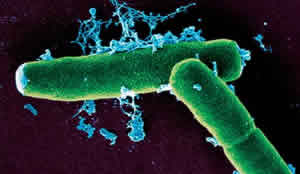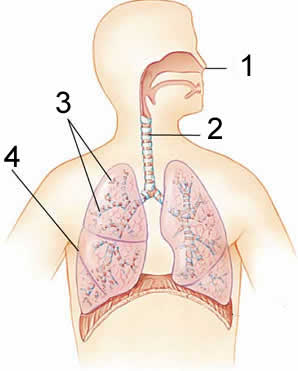Science of Conflict
Anthrax

1) Spores can be taken in through the respiratory system. They enter and germinate in warm, moist, fertile conditions.
2) The immune system responds
by sending special white blood cells to eradicate the spores. Some spores
are destroyed in the process while others are carried to the lymph nodes
of the chest.
3) Some spores penetrate the walls of the alveoli
where they germinate.
4) As the bacteria multiply they produce toxins which spread to the blood. In the lungs these toxins produce, bleeding, tissue death and fluid build up

Initial symptoms resemble a common cold that may last for a long as 3 days. Then a marked decline takes place with sweating, trouble breathing and after 24 hours the patient goes into shock and dies.
Anthrax is not contagious and needs a place of entry into the body such as a cut. The way the bacteria enters the body is critical in determining how it is treated. If the bacteria enters through food contamination or a cut, antibiotics are usually successful in treating the disease. However, respiratory infection is very hard to treat and nearly always fatal.